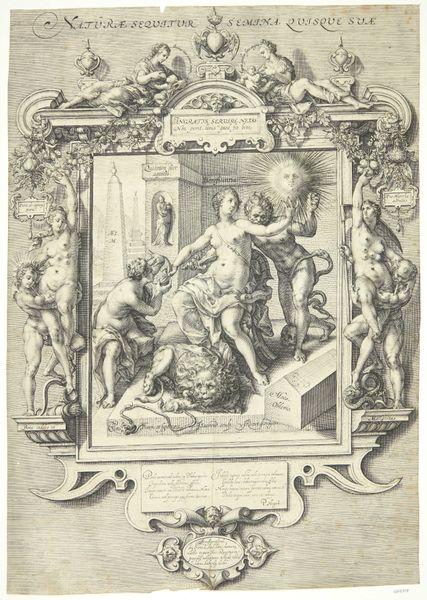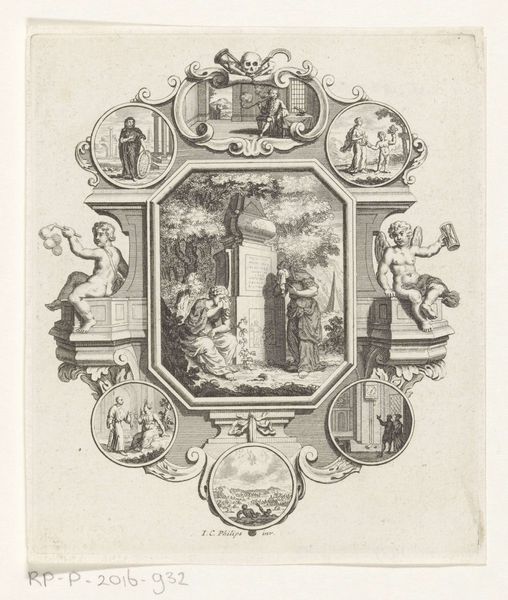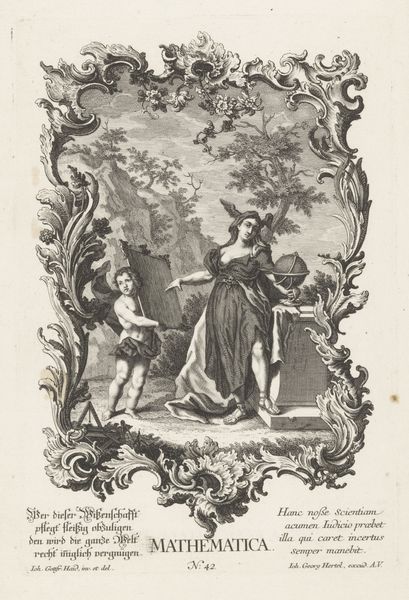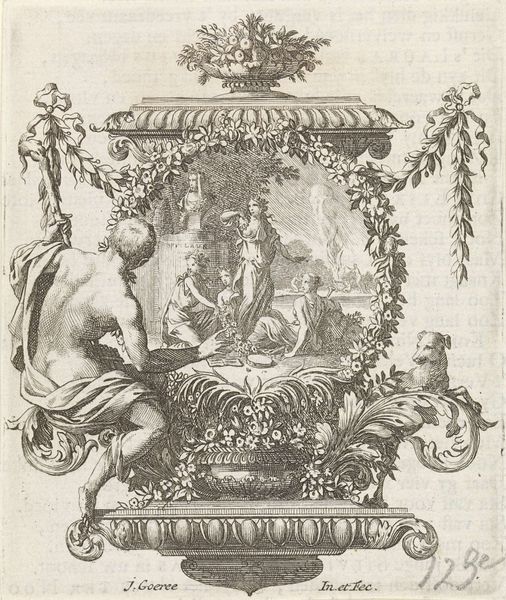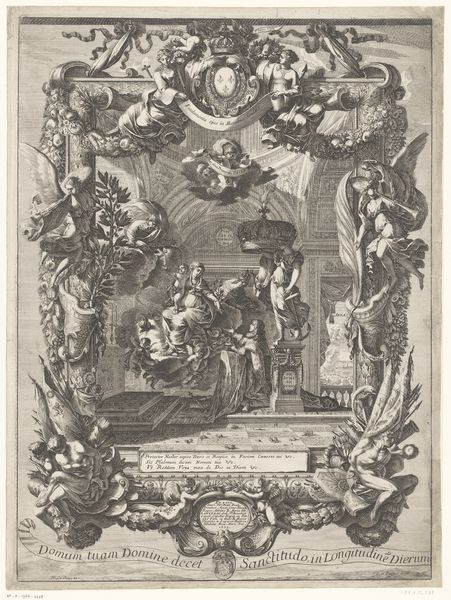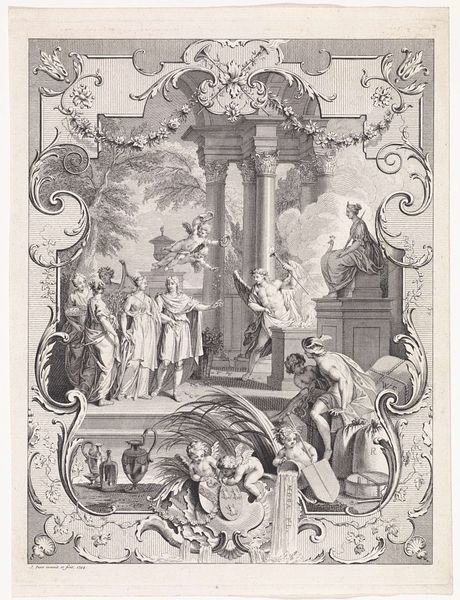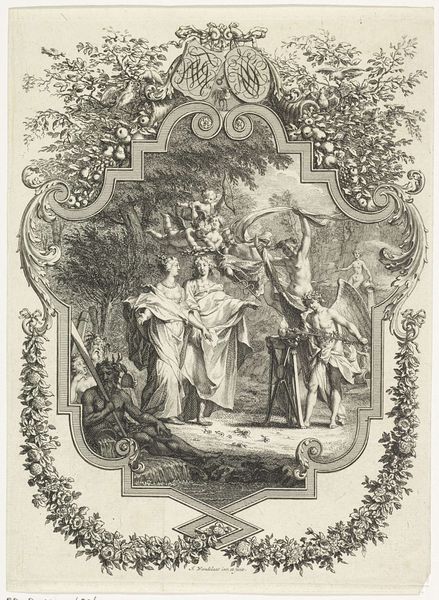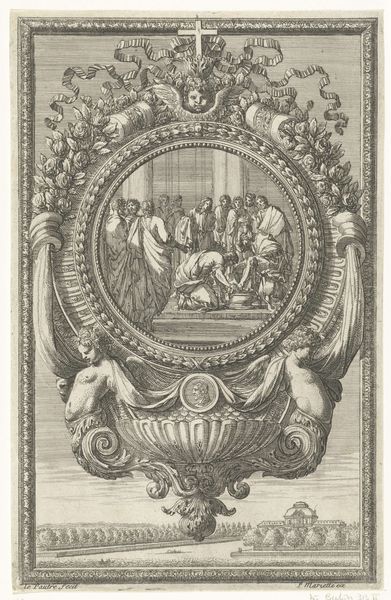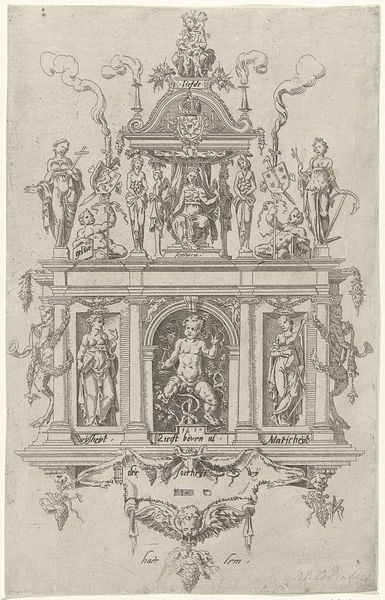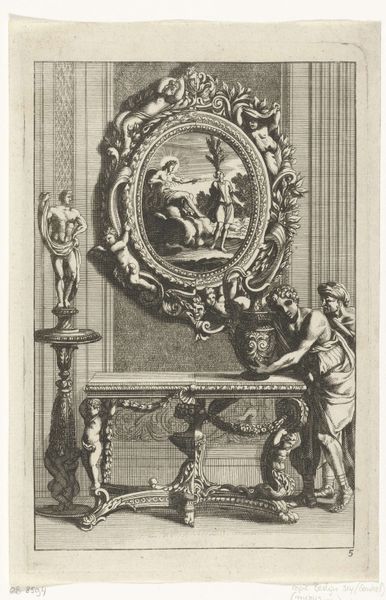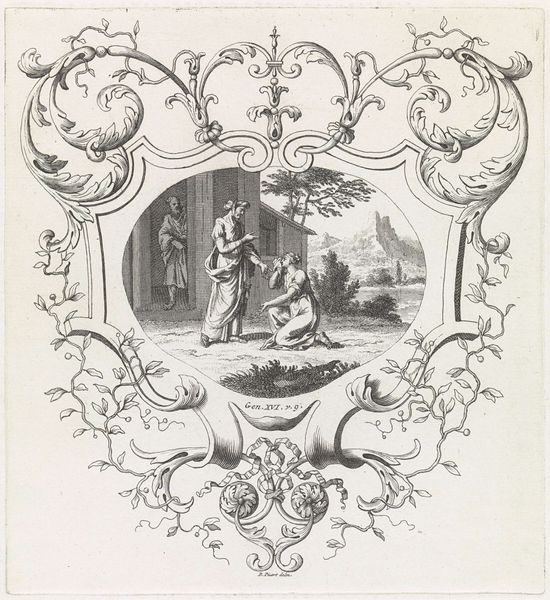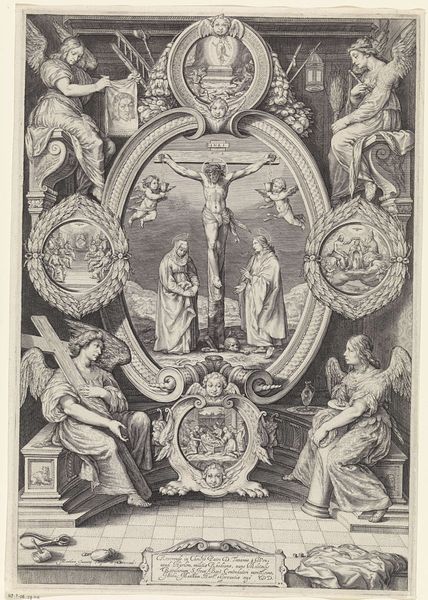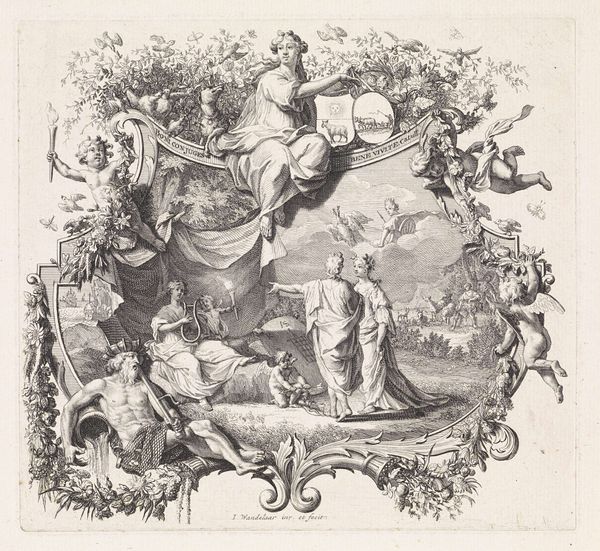
engraving
#
allegory
#
baroque
#
pen drawing
#
landscape
#
figuration
#
line
#
engraving
Dimensions: height 207 mm, width 163 mm
Copyright: Rijks Museum: Open Domain
Curator: This engraving, known as "Vignet met een paar voor een fontein," was crafted by Jan Wandelaar sometime between 1710 and 1759. The piece demonstrates Wandelaar's skill in the baroque style, employing intricate line work to render both figuration and landscape elements. What’s your initial read of it? Editor: Wow, okay. At first glance, I'm struck by this feeling of elaborate fantasy—almost a stage set design. There’s a distinct hierarchy, everything is placed just so, which to me creates a beautiful but slightly overwhelming experience. Curator: Overwhelming is apt. The composition presents a calculated complexity, a characteristic attribute of Baroque sensibilities. Note the allegorical elements – cherubs, statues, intertwined figures – all meticulously arranged within the vignette. Semiotically, they act as layered symbols meant to be interpreted by the informed viewer. Editor: True. Those little cherubs tossing garlands do add a light, playful contrast to the otherwise quite formal and rigid setting. Is that tension intentional, do you think, or more a product of its time? Curator: Arguably, the tension between levity and solemnity epitomizes the Baroque aesthetic—a deliberate juxtaposition of ethereal and monumental elements. Wandelaar constructs an idealized vision, one carefully framed within both mythological and societal parameters. It also offers some beautiful linear patterns and flourishes. Editor: I'm also seeing an incredible balance in the composition. How he plays with shadow and light just makes your eyes dance around the picture. I sense it might be tempting for some viewers to simply see “an old drawing", but to me it shows a world that's rich and deeply considered. Curator: Precisely. Through close attention to the visual syntax, we decipher not just surface aesthetics but also the intricate symbolic narratives interwoven into this 18th-century creation. Editor: Which invites reflection, of course, even beyond any attempt at definitive conclusions. Thanks for walking me through Wandelaar’s world here.
Comments
No comments
Be the first to comment and join the conversation on the ultimate creative platform.
